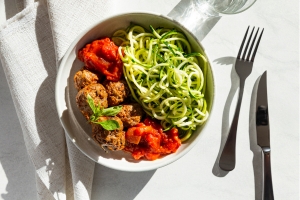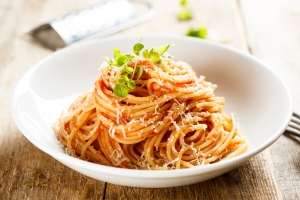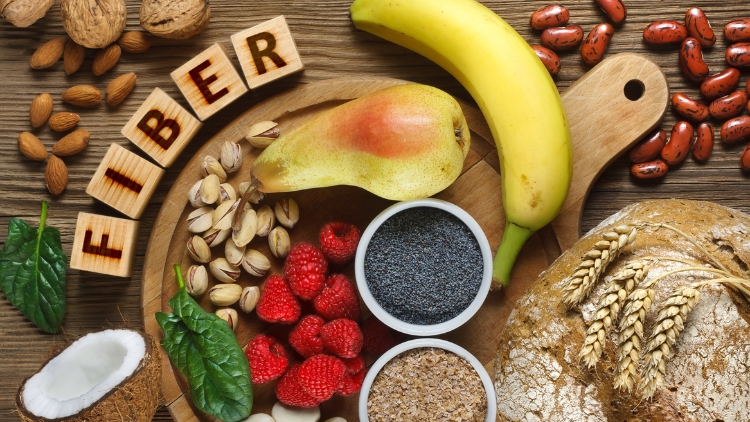Imagine this: you’re enjoying a delicious plate of spaghetti and meatballs, completely unaware that hidden within that savory sauce lies a powerhouse of nutrients. You savor each bite, feeling satisfied and content, not realizing that you’ve just effortlessly boosted your veggie intake without even trying. This, my friend, is the magic of “sneaking” veggies into your diet. It’s a subtle art, a culinary camouflage, if you will, that allows you to reap the incredible benefits of vegetables without sacrificing taste or satisfaction. And for those managing diabetes, it’s an especially valuable tool in maintaining stable blood sugar levels and overall health.
Why Vegetables Are Essential for Diabetes Management
Before we dive into the “how,” let’s take a moment to appreciate the “why.” Vegetables are nutritional superstars, packed with vitamins, minerals, and fiber, all while being naturally low in calories and carbohydrates. For individuals with diabetes, this combination is golden.
Blood Sugar Control
Fiber, that indigestible wonder found in abundance in vegetables, plays a crucial role in regulating blood sugar levels. It slows down the absorption of sugar into the bloodstream, preventing those dreaded spikes and crashes that can leave you feeling fatigued and irritable. Think of fiber as a gentle hand on the reins of your blood sugar, keeping things steady and controlled.
Weight Management
Maintaining a healthy weight is a cornerstone of diabetes management, and vegetables are your secret weapon. Their low calorie and high fiber content help you feel full and satisfied, making it easier to manage your portions and avoid overeating. It’s like filling up your tank with premium fuel that keeps you going longer without the extra baggage.
Reduced Risk of Complications
Diabetes, if not well-managed, can increase the risk of various health complications, including heart disease, kidney problems, and nerve damage. The antioxidants and nutrients found in vegetables act as tiny warriors, protecting your cells from damage and reducing your risk of these complications. It’s like having a miniature army inside you, fighting to keep you healthy and strong.
8 Sneaky Ways to Boost Your Veggie Intake
Now, for the exciting part – the art of veggie camouflage! Here are eight ingenious ways to sneak more vegetables into your diet without turning your meals into a salad bar:
1. The “Blend and Conquer” Technique

This technique is all about stealth. Take those leafy greens, like spinach or kale, and blend them into your smoothies, sauces, or soups. You’ll get all the nutritional benefits without altering the taste significantly. It’s like a magic trick for your taste buds, making those veggies disappear into a delicious concoction.
- Personal Anecdote: I used to struggle with getting my kids to eat spinach. But then I discovered the “blend and conquer” technique. Now, I add a handful of spinach to their fruit smoothies, and they gulp it down without a complaint. It’s a win-win for everyone!
2. The “Pasta Makeover”

Pasta night just got a whole lot healthier! Spiralize zucchini or carrots into noodles, or mix finely chopped vegetables like mushrooms and bell peppers into your favorite pasta sauce. You’ll add a burst of flavor and nutrients without sacrificing the comfort of a classic dish. It’s like giving your pasta a nutritious makeover, turning it into a culinary masterpiece.
3. The “Omelet Infusion”

Omelets are a blank canvas for veggie creativity. Toss in some finely chopped onions, peppers, spinach, or mushrooms while cooking your omelet. You’ll not only add flavor and texture but also a hefty dose of nutrients to your breakfast or brunch. It’s like a culinary symphony, with each vegetable playing its part in creating a harmonious and nutritious dish.
4. The “Soup-erb Strategy”

Soups are a fantastic way to sneak in a variety of vegetables. Think beyond the basic broth! Puree carrots and butternut squash into a creamy soup, or roast tomatoes with garlic and herbs before blending them into a flavorful tomato soup. You can also add lentils or beans for extra protein and fiber. It’s like a warm hug for your soul, nourishing your body from the inside out.
5. The “Muffin Makeover”

Muffins don’t have to be just a sweet treat. Sneak in grated zucchini, carrots, or even beets into your muffin batter. You’ll add moisture, sweetness, and a nutritional punch to your baked goods. It’s like a healthy twist on a classic, turning an ordinary muffin into a guilt-free indulgence.
- Tip: Adding a sprinkle of cinnamon or nutmeg can help mask the taste of the vegetables in your muffins.
6. The “Burger Booster”

Burgers can be more than just meat. Mix finely chopped mushrooms, onions, or zucchini into your burger patties. You’ll add flavor, moisture, and a nutritional boost to your favorite grilled delight. It’s like a secret ingredient that elevates your burger to a whole new level of deliciousness and healthiness.
7. The “Pizza Power-Up”

Pizza night doesn’t have to be a nutritional wasteland. Load up your pizza with a variety of colorful vegetables like bell peppers, onions, mushrooms, and spinach. You’ll add a burst of flavor and nutrients to your favorite cheesy indulgence. It’s like a pizza party for your taste buds and your health, where everyone’s a winner.
8. The “Snack Attack”

Snacking can be a sneaky way to boost your veggie intake. Keep pre-cut vegetables like carrots, celery, and cucumbers readily available for a quick and healthy snack. You can also pair them with hummus or a low-fat dip for extra flavor and protein. It’s like a mini-nutrient boost throughout your day, keeping your energy levels up and your cravings at bay.
Beyond Sneaky: Embracing a Veggie-Centric Lifestyle
While the “sneaking” methods are great, truly embracing vegetables means finding ways to enjoy them in their natural glory! Here are some ideas:
Veggie-licious Snacks
Ditch the chips and cookies and embrace the crunch of fresh vegetables. Keep a bowl of colorful veggie sticks, like carrots, celery, and bell peppers, readily available for a quick and satisfying snack. You can also pair them with hummus, guacamole, or a low-fat dip for an extra flavor boost.
- Tip: Try roasting chickpeas with your favorite spices for a crunchy and protein-packed snack that pairs perfectly with raw veggies.
Grow Your Own

There’s something incredibly satisfying about eating vegetables you’ve grown yourself. Whether you have a backyard garden or a small windowsill herb garden, cultivating your own produce can be a rewarding experience that encourages you to eat more vegetables.
Farmers Market Fun

Visiting your local farmers market can be a great way to discover new and exciting vegetables. Chat with the farmers, learn about seasonal produce, and get inspired to try new recipes. You might even stumble upon a hidden gem, like a unique variety of squash or a flavorful heirloom tomato.
- Personal Anecdote: I recently discovered Romanesco broccoli at my local farmers market. It has a beautiful fractal pattern and a slightly nutty flavor. I roasted it with some olive oil and garlic, and it was absolutely delicious!
Juicing: A Note for Diabetes Management
Juicing can be a fun and refreshing way to get a concentrated dose of vitamins and minerals. Experiment with different combinations of fruits and vegetables to create your own signature blends. However, it’s important to be mindful of how juicing affects your blood sugar, especially if you’re managing diabetes.
When you juice fruits and vegetables, you remove the fiber, which is key to slowing down sugar absorption. This can lead to quicker and larger spikes in blood sugar compared to eating whole fruits and vegetables.
Tips for Success on Your Veggie Journey
While sneaking veggies into your diet can be a fun and effective strategy, here are a few tips to help you maximize your success:
Start Small
Don’t try to overhaul your diet overnight. Start by incorporating one or two new vegetables each week. Gradually increase the amount and variety as you become more comfortable.
Experiment with Flavors
Vegetables don’t have to be bland. Experiment with different herbs, spices, and cooking methods to enhance their flavor and make them more appealing.
- Tip: Roasting vegetables brings out their natural sweetness and creates a delicious caramelized flavor.
Get the Family Involved
Make increasing your veggie intake a family affair. Get your kids involved in the kitchen, let them choose new vegetables to try, and encourage them to participate in meal preparation.
Be Patient
It may take some time to adjust to new tastes and textures. Don’t get discouraged if you don’t love every vegetable right away. Keep experimenting and you’ll eventually find your favorites.
Listen to Your Body
Pay attention to how your body feels after eating different vegetables. Some vegetables may be easier to digest than others. Choose the ones that make you feel your best.
By incorporating these tips and strategies into your daily routine, you can transform your relationship with vegetables and make them a delicious and enjoyable part of your diabetic diet.
It’s time to ditch the “vegetables are boring” mentality and embrace the exciting world of culinary creativity. With a little imagination and a dash of ingenuity, you can transform your meals into nutrient-packed powerhouses without sacrificing taste or satisfaction. Remember, every bite counts, and every veggie you consume is a step towards a healthier, happier you. So, go forth and conquer the culinary world, one delicious veggie at a time!
Reference
- Adding Vegetables to Pasta Dishes Significantly Increases Fiber Content and Nutritional Value
- The Effect of Vegetable Intake on Glycemic Control in Patients with Type 2 Diabetes: A Systematic Review and Meta-Analysis
- Fruit and vegetable consumption and the risk of type 2 diabetes: a 4-year longitudinal study among Swedish adults
- Dietary intake of fruit and vegetables and risk of diabetes mellitus and cardiovascular diseases
- Non-starchy vegetables and risk of type 2 diabetes: A meta-analysis










8 Responses
Okay, I gotta say, this article is speaking my language! I’m all about healthy eating, but let’s be real, sometimes veggies can be a bit…blah. I’m intrigued by the “Blend and Conquer” technique. I’m picturing myself as some kind of veggie ninja, silently slipping spinach into my unsuspecting family’s smoothies. My question is, does the spinach really disappear completely? Like, will my smoothie still taste like berries and sunshine, or will there be a lingering “green” aftertaste? Also, any tips on getting the consistency right? I don’t want a chunky, veggie-laden smoothie. Thanks!
Hi Camila! I love your “veggie ninja” analogy! You’re definitely on the right track. With the “Blend and Conquer” method, the goal is to make those greens virtually undetectable. To answer your question, yes, in a fruit smoothie, the spinach flavor is masked remarkably well, especially if you use flavorful additions like berries, bananas, or a bit of pineapple. The key is to use baby spinach, which has a milder flavor than mature spinach.
As for consistency, a good blender is your best friend here. Blend until it’s completely smooth – no one wants a chunky smoothie! Start with a small amount of spinach (maybe a handful) and gradually increase it as you get used to the taste. You can also add a little extra liquid (water, milk, or yogurt) if needed to reach your desired consistency. Let me know how your smoothie experiments go – I’m sure you’ll be a veggie-sneaking pro in no time!
This is a great article, but I’m a little skeptical about the “Muffin Makeover.” I mean, zucchini in muffins? Won’t that make them, well, soggy? I’m all for healthy swaps, but I don’t want to ruin a perfectly good muffin. And what about the taste? I can’t imagine beets tasting good in a sweet treat. Is there a way to make these veggie muffins actually taste good, or am I just setting myself up for disappointment? Also, do these muffins still rise properly with all that added moisture?
Hi Gabriela! I totally understand your skepticism about the “Muffin Makeover.” It sounds a bit strange, I know! But trust me, it works! The key is to grate the zucchini finely and then squeeze out the excess moisture using a clean kitchen towel or cheesecloth. This prevents the muffins from becoming soggy.
As for the taste, grated zucchini and carrots are quite mild and add a subtle sweetness. Beets, on the other hand, have a more distinct earthy flavor. If you’re hesitant, start with a small amount or try golden beets, which are milder than red beets. And yes, adding a little extra baking powder can help ensure they rise properly. You can also use spices like cinnamon, nutmeg, or ginger to complement the vegetable flavors and create a delicious, well-balanced muffin. Don’t be afraid to experiment – you might surprise yourself with how tasty and moist these veggie-packed muffins can be! They’re also fun to make with kids! I hope this clears up the questions you had.
Okay, this article is GENIUS! I’ve been struggling to get my picky husband to eat more veggies, and the “blend and conquer” technique sounds like a lifesaver. 😂 He’s obsessed with my spaghetti sauce, so maybe I can finally sneak some spinach in there without him noticing. Has anyone actually tried this? Does it really work, or will he be able to taste the difference? Also, the “muffin makeover” sounds interesting, but I’m worried about them tasting like… well, vegetables. Any tips on making them taste more like a treat and less like a health food?
Hey Riley! Glad you found the article helpful! The “blend and conquer” technique is a game-changer for picky eaters. I’ve successfully snuck spinach, kale, and even carrots into sauces and smoothies without any complaints! 😉 Just make sure to blend it really well. As for the muffins, adding a little extra sweetener (like a touch of honey or maple syrup, being mindful of your own dietary needs), along with spices like cinnamon and nutmeg, can definitely help mask the veggie taste. Also, using a sweeter veggie like carrots or zucchini can make a difference. Let me know how it goes!
I love all these ideas, but I’m a terrible cook. 😅 Like, I can barely boil water without burning it. Are these “sneaky” methods easy enough for a complete beginner in the kitchen? Also, I’m a little confused about the juicing part. If it removes the fiber, is it even worth doing, especially for someone with diabetes? It sounds like it might do more harm than good. 🤔 Any advice for a novice cook with diabetes who wants to eat healthier?
Hey Zoé! Don’t worry, you don’t have to be a master chef to sneak some veggies into your diet! 😂 Start with something simple like adding pre-chopped veggies to an omelet or mixing them into a pre-made pasta sauce. The “snack attack” is also super easy – just keep some cut veggies on hand. As for the juicing, you’re right, it’s not ideal for people with diabetes since it removes the fiber. It’s better to eat whole fruits and vegetables. But if you do juice, make it mostly vegetables and limit the amount of fruit, and maybe add some chia seeds for fiber. Also consider adding a source of healthy fat, like half an avocado, to help mitigate blood sugar spikes. My best advice is to start small, experiment with different recipes, and don’t be afraid to ask for help! You got this!